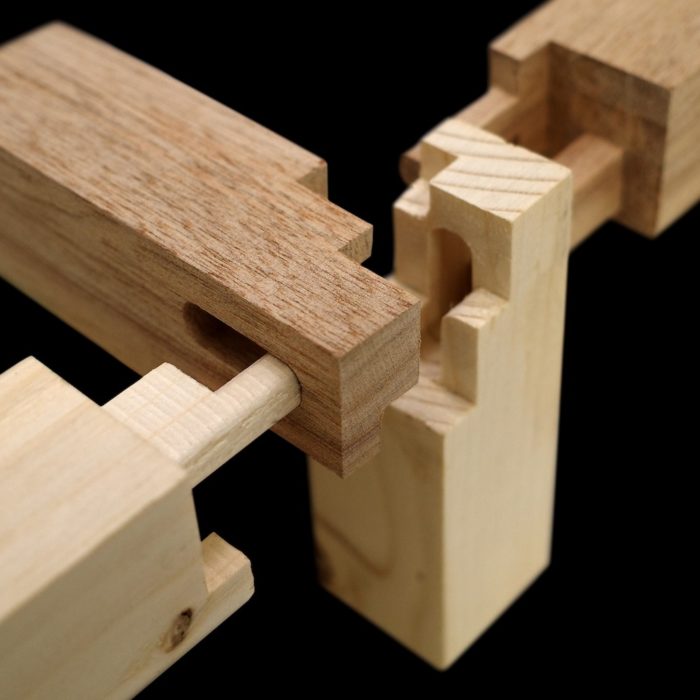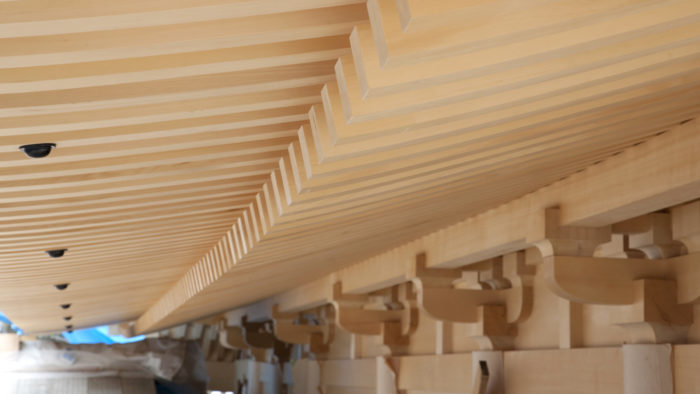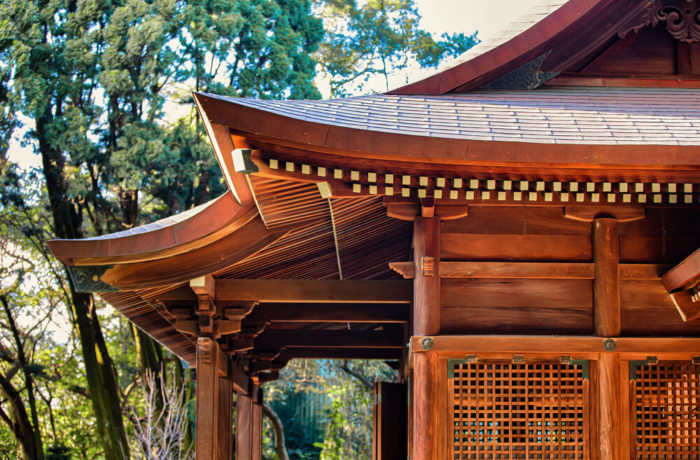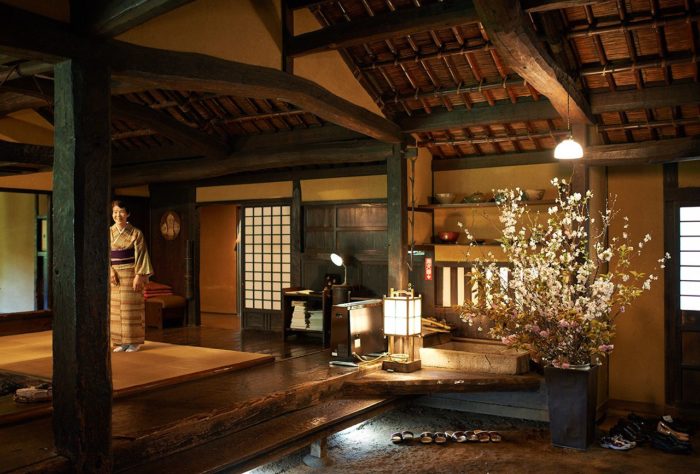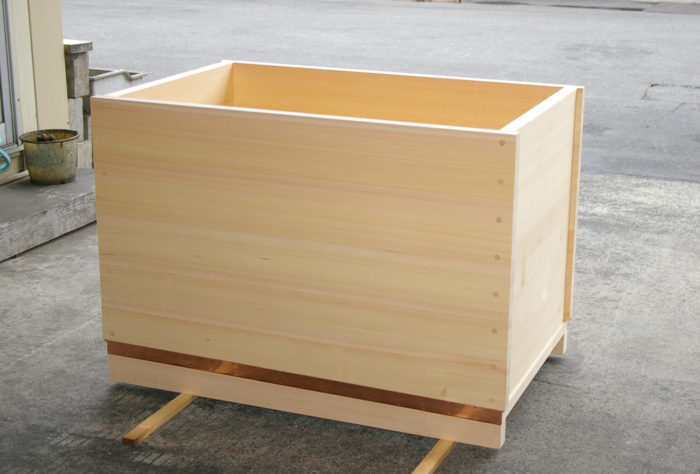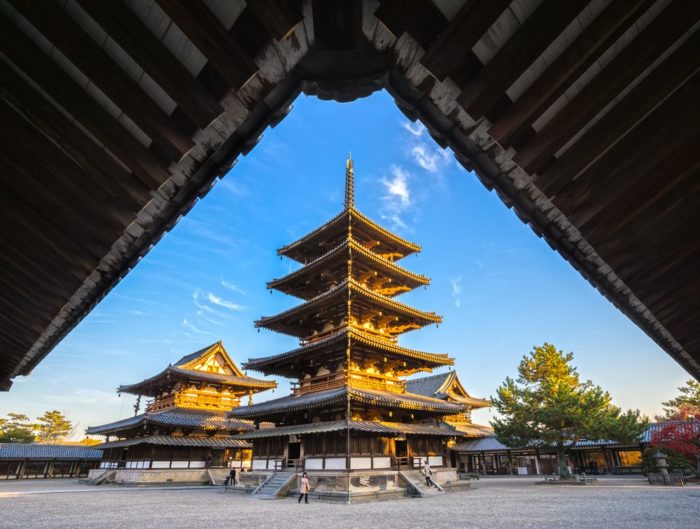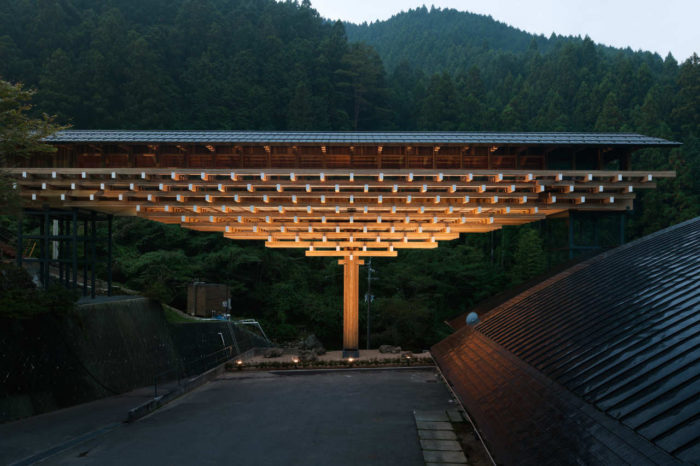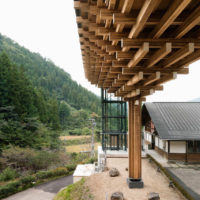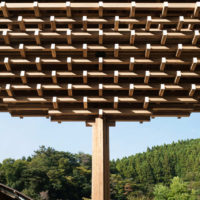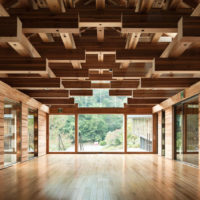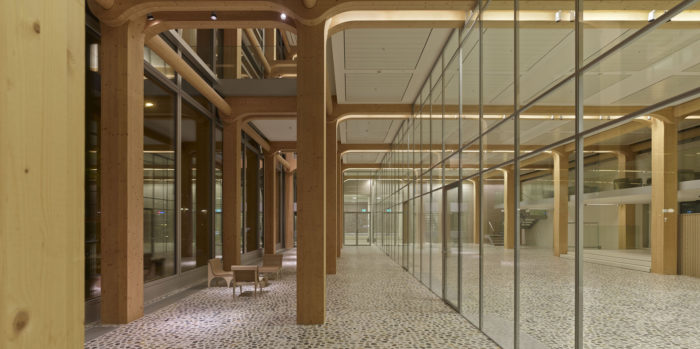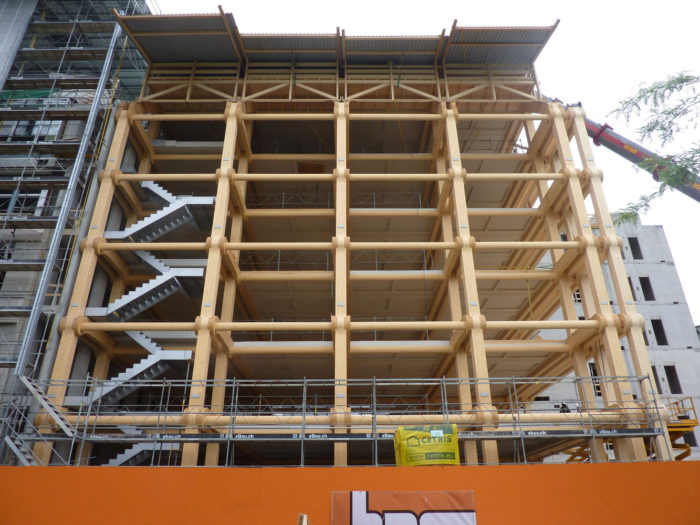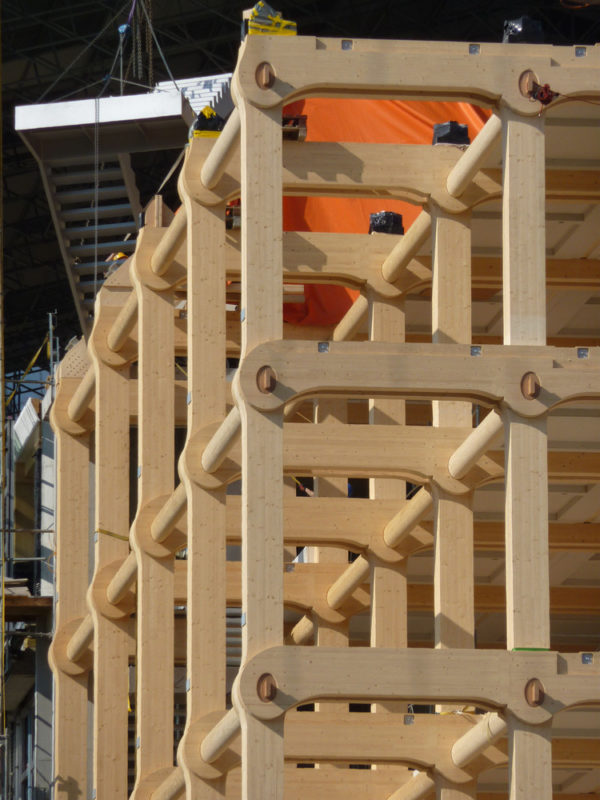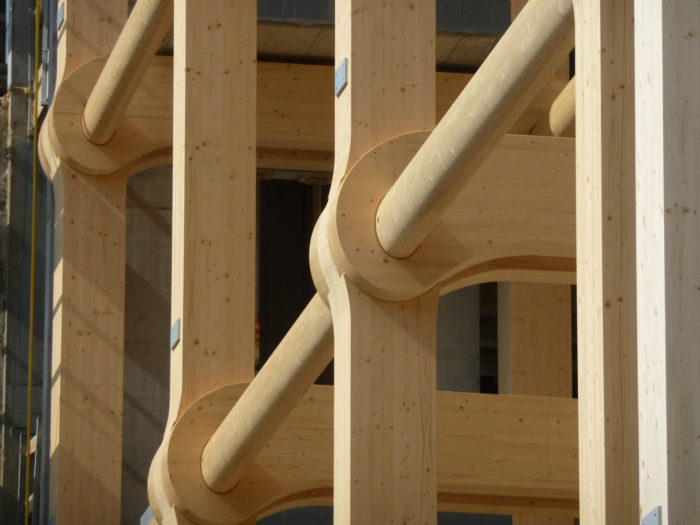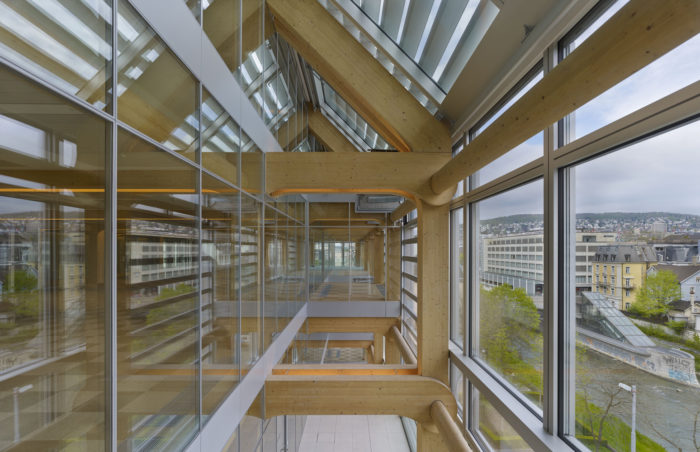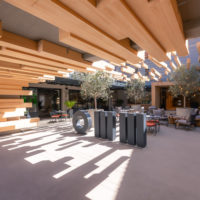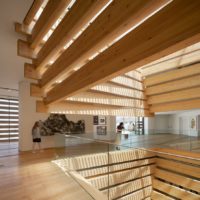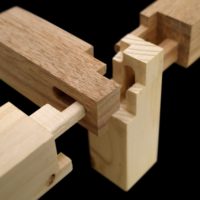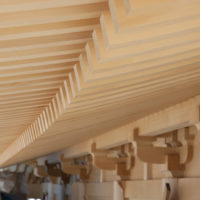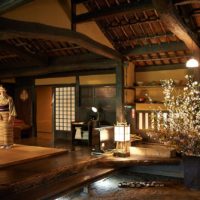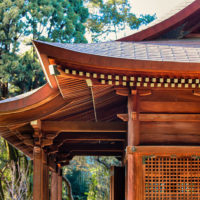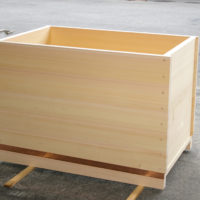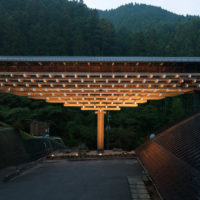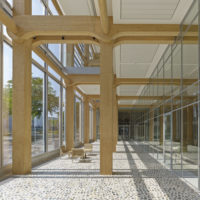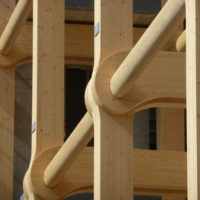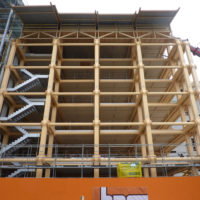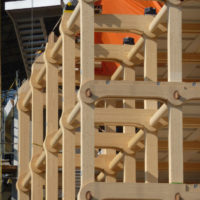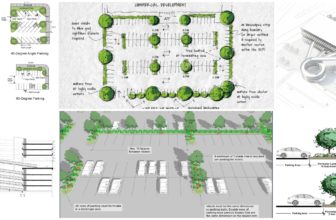In Japan, skilled Japanese craftspeople have been using a building method that requires only one primary material, wood, since the 12th century. In traditional Japanese wood joinery, notches are cut into timber planks, and the gaps between them lock together to create a robust framework; this eliminates the need for glue, nails, or other fasteners.
Why is Japanese Wood Joinery so Good?
The term “joinery” describes the woodwork employed in a structure and the methods used in its construction. The skilled worker doing this is commonly called a joiner because of their work in joining wooden frames. To this day, no metal screws or adhesives are used to produce traditional Japanese wood joinery.
Even though nail-free construction isn’t exclusive to Japan, the quality of the joints employed, the longevity of the resulting structures, and the total lack of iron are what set apart Japanese wood joinery.
Similar joinery methods are used in European and American architecture, though usually functionally rather than decoratively. Ultimately, woodwork is, first and foremost, a practical art form employed in producing valuable products and structures.
However, in Japan, intricate joinery techniques are employed not just for functional purposes but also to showcase expertise and improve elegant simplicity. This type of decorative joint is widely used in the furniture industry but can also be found in buildings like temples, chapels, and even fortresses.
Another significant distinction that sets Japanese wood joinery aside is that, while American and European construction frequently used nails when it made sense, Japan’s impoverished iron supply led to fragile, instantly damaged nails. Because of this, Japanese architects and builders developed creating methods without using metal.
What Kind of Wood is Used for Japanese Joinery?
Professional Japanese carpenters also need to know how to properly age and treat wood, which is a skill in and of itself. The wood used in major construction projects is often aged and hand-picked to ensure the highest quality.
Japanese cypress, or “hinoki,” is a well-known wood used in conventional Japanese architecture. Because of its increased decay resistance, apparent grain, and tensile strength after growing older, this wood is a popular choice. It is estimated that the Japanese cypress has been used in traditional Japanese buildings for over a thousand years.
Japanese Wood Joinery Examples
Like all ancient Japanese arts, Japanese wood joinery is cluttered by experts who have labored for decades, over generations, trying to perfect their craft. We will now examine some exemplary applications of the fascinating Japanese wood joinery procedure.
1) Horyu-ji Pagoda
The Horyu-ji Temple in Nara, Japan, is a beautiful representation of the skill of miyadaiku craftspeople. Eleven of the complex’s buildings are from the late 7th century, making them some of the world’s earliest surviving wooden buildings, as verified by UNESCO.
2) Yusuhara Wooden Museum Bridge
The architect Kengo Kuma resurrected the ancient Japanese method of suspension bridge construction for this project. The bridge trestle is constructed by starting at either end and adding a tiny amount at a time using several intertwining laminated wood pieces.
The laminated wood elements are composed of a material with an appearance and complexity similar to wood masonry; by joining these wood masonry sections to expand their dimensions, the architects aimed to make a non-hierarchical building in terms of its material properties, advanced technologies, and historical context.
- ©Takumi Ota Photography
- ©Takumi Ota Photography
- ©Takumi Ota Photography
Also, Check the following: 15 Must-See Cabins in the Woods Transformed Into Hotels.
3) Tamedia Office Building
Shigeru Ban, the winner of the Pritzker Architecture Prize, is known for his innovative use of materials. He is known as the “Paper Architect” because he frequently uses cardboard, paper, and even old beer cartons to construct structures, including everything from impermanent shelters to lavish museum pavilions.
In this project, Ban selected wood as the primary building material for the Tamedia Office Building because he considers Swiss wood engineering to be of the highest standard. Ban wanted an ecologically friendly design, so he built the building out of wood. However, this presented significant difficulties, given the client’s request for a spacious office allowing flexible wooden layouts.
Therefore, the architect used a Japanese wood joinery system that heavily relied on prefabricated wood components and pin joints. The idea lies in how they are put together; parts can be methodically added and swapped out as needed. There is no need to emphasize the importance of accuracy and quality in this context.
Pin joints give the structure a distinctive and welcoming appearance and enhance its integrity by allowing a small degree of room to maneuver when the materials are joined together.
Beams can be fashioned from a single piece of wood since their constituent parts can be easily replaced. The structural integrity of the wood beam was tested to its maximum, but the resulting open floor plan satisfied the client’s needs.
The pine timber used for all the joints is of the same high quality. There are no metal fasteners in the wood slats, so the resulting structural system has incredible hidden features that, when uncovered, create a one-of-a-kind atmosphere and sensory environment.
4) Odunpazari Modern Art Museum
Kengo Kuma, a Japanese architect with a global reputation, is best known for his intricate wooden and mixed-material structures, which emerge from a seemingly straightforward assembly pattern but create a whole complex thanks to multiple intersections and curves.
The Odunpazari Modern Art Gallery aims to increase awareness of Turkish art and enrich Eskisehir’s cultural scene. Odunpazari is the neighborhood where the construction location can be found. Its location marks the transition between the established city and the typical Ottoman wooden homes of the nearby community.
The varying dimensions of the piled and interconnected boxes allow for a range of display heights and widths. Large-scale artwork and installation can be accommodated in the ground floor boxes. The higher levels of the boxes are scaled down to display more miniature works of art. Each floor is connected by a center atrium made of wooden blocks, which lets light in from a skylight above.
- ©Kemal Seçkin
- ©Kemal Seçkin
- ©Batuhan Keskiner
- ©NAARO
Visiting a Japanese sanctuary or shrine is a great way to learn about the architectural aspects of Japanese wood joinery. Upon closer inspection, these buildings’ accuracy and expert crafting will leave you in awe. It is much simpler to appreciate traditional Japanese buildings if you know how they are constructed. If you visit a shrine or temple in Japan, you are guaranteed to spend hours immersed in the exceptional intricate details.
Check out this video for a more in-depth look at how to use traditional Japanese wood joinery.
FAQS:
What is Japanese wood joinery called?
Sashimono refers to the traditional method of wood joining in Japan. It's a method of building with wood that doesn't require nails and can be used for anything from basic furniture to intricately carved sculptures.
When did Japanese wood joinery start?
Initially influenced by Chinese architecture, Japanese wood joinery flourished in the 12th century. Joints in old Chinese woodwork were developed to construct wooden structures and furnishings without needing modern-day utilities like nails, pins, glue, or power drills.
Are Japanese wood joints strong?
Japanese Joinery is a tool-free method of construction that yields sturdy, long-lasting results and can be used for anything from furnishings to outer walls.
How is Japanese Joinery Used in Architecture?
As mentioned, unlike conventional woodworking techniques, Japanese joinery doesn't use irreversible fasteners (like screws, nails, or glue). Instead, forces are resisted by the material characteristics of the joints and the interlocking links between them.
How is Japanese Joinery Used in Furniture Making?
Through the time-honored woodworking technique of mortise and tenon. These joints have been used in furniture construction since the dawn of woodworking, and they remain among the most rigid and aesthetically pleasing ways to join wood.
- ©Spoon & Tamago
- ©Shimizu
- Inside a Worship house. ©Flickr
- ©Josh Ellis Photography
- ©Bartok Design
- ©japanrailpass.com.au
- ©Takumi Ota Photography
- ©Takumi Ota Photography
- ©Takumi Ota Photography
- ©Takumi Ota Photography
- ©NAARO
- ©Didier Boy de la Tour
- ©Didier Boy de la Tour
- © Shigeru Ban Architects
- ©Shigeru Ban Architects
- ©Didier Boy de la Tour
- ©Didier Boy de la Tour
- ©NAARO
- ©Batuhan Keskiner
- ©Kemal Seçkin
- ©Kemal Seçkin


